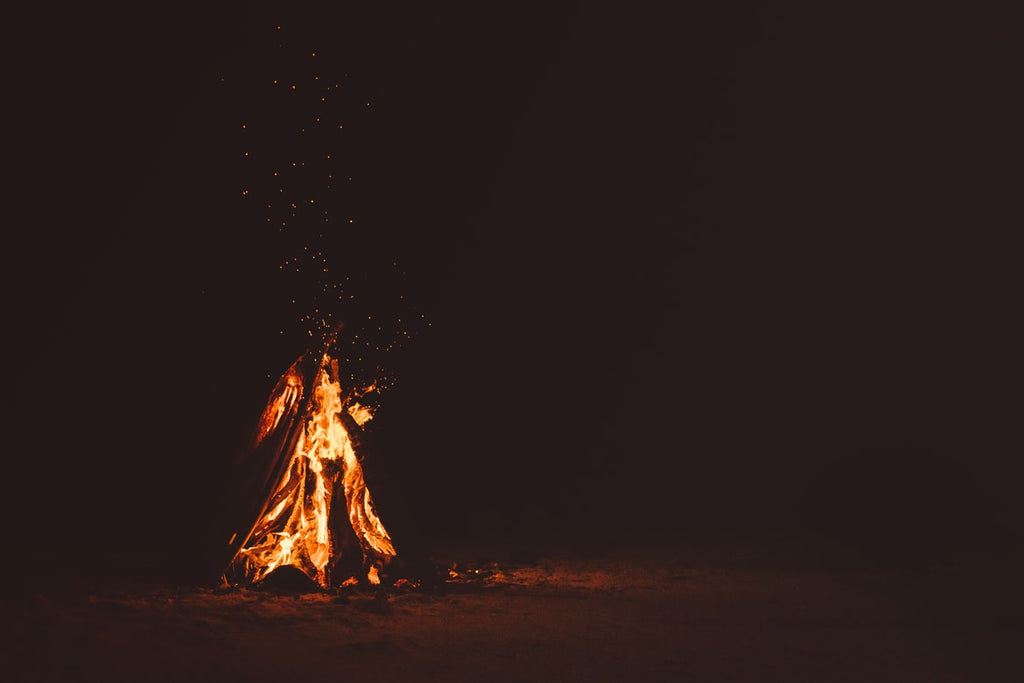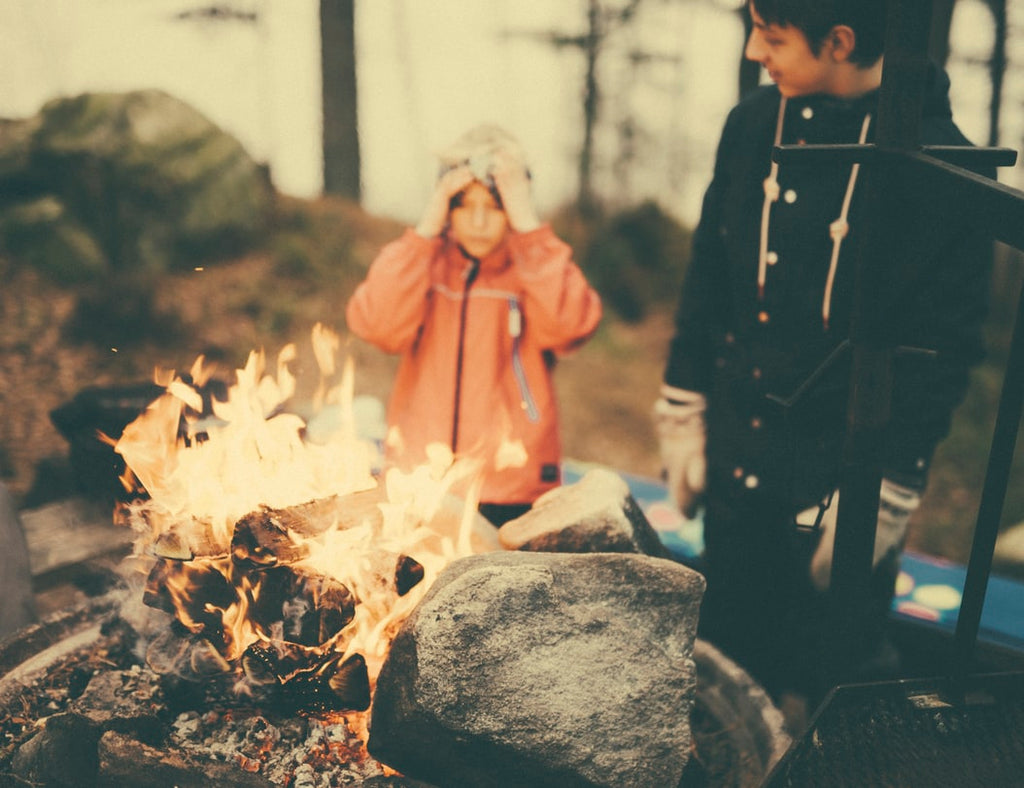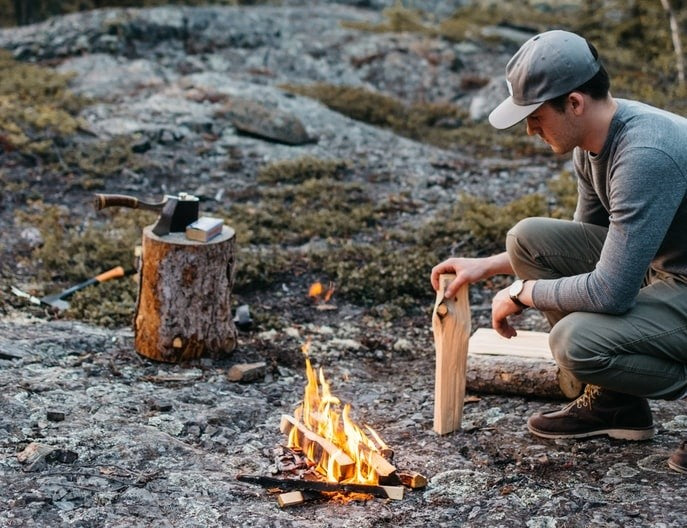
How To Build a Campfire Step By Step
Is there anything more soothing than a campfire at a campsite? It’s a camping tradition that appeals to all senses. A campfire is one of the greatest delights when enjoying time outdoors. Usually, it's used to keep campers warm, protects them from predators, and helps them survive in colder climates. While starting a campfire is a lovely experience, it requires strategies and practice. Here we have prepared top 10 campfire songs for your next camping trip! The key to a successful campfire is to start slowly and gradually build it until it remains contained at a controlled burn rate.
Before starting a campfire, there are many campfire materials you will need. Also, it is crucial to always check with the campground or state park’s policies before gathering your materials at your campsite. While many backcountry sites permit the use of certain campfire essentials, many campgrounds offer firewood onsite.

Firewood types
Firewood is the campfire's fundamental and most crucial element is dryness. Firewood is the fuel of fire. For a cleaning burning fire, the type of wood you choose matters. Using dry and seasoned wood like maple, hickory, and oak will make the fire burn brighter while adding a nice touch of flavor to the meal. Below are the distinctions of some standard firewood.
Maple: This type of firewood is known to be dense and complex. They are known for producing a long-burning campfire with high heat production.
Oak: Oak is one of the most popular types of firewood. It is slow-burning wood that produces a hot minimal-sparking fire.
Ash: This type of firewood is lightweight and easy to split. It tends to burn hot, slow, and steady.
Birch: Birch is a softer type of firewood that burns quickly. It creates an ambiance of a cheerful, bright campfire.
Cherry or black cherry: This is a favorite kind of wood for campers while cooking. It has a minimal amount of smoke and has a lovely aroma. It is best used for smoking meat, pork, or chicken.
In a super wet condition or rainy season, fuel can come in handy. Tinder is the easiest-to-catch material used in building a campfire. Tinder's materials consist of many types including, waddled strips or pieces, dryer lint, dry leaves or grasses, wood chips, candle wax, sticks, or bricks, amongst many others. Meanwhile, kindling is larger than tinder. They are a combination of small twigs, branches, or chopped wood to help shape the fire.
The spark or flame source
Knowing how to start a campfire with the strike of two stones is a valuable survival skill. However, if you haven’t practiced the technique enough to save yourself, consider packing matches, lighter or a portable power station such as AceVolt Campower to save the day. Another fire starter is flint and steel, which can reliably produce a flame to get your campfire burning. Before starting your campfire, you need to understand how to build a durable campfire that won’t lose its flame till you are done.
How to build a campfire
During your camping trip, you must know how to make a campfire. Whether car camping or backpacking, building a campfire the right way is durable and lifts your mood. Before creating your campfire, there are different questions to ask yourself. Would you use a ring campfire or a camping fire pit? Are you at the right location for campfires? At night, do you own a portable power station such as AceVolt 700 to light up your appliances?
Choosing a safe location with a clear opening up above and around paves room for sparks and embers while the fire burns. As a camper, you need to keep your tent away from the campfire to avoid loss of belongings. Most campgrounds feature metal fire rings for the campfire type, while others dig pits or build fire rings in the backcountry. Ideally, the base of the fire pit is mineral soil or sand. Intense heat can sterilize healthy soil, so you should pick the site carefully.
After choosing a safe location, create a tinder bed. The layout of your tinder is dependent on the type of fire you are building. Set down a layer or bundle of your tinder in your safe spot. Make sure there is a lot of tinder for fueling up the fire later. Arrange the kindling on top of the tinder according to your campfire structure. Finally, build your fire based on its use. Are you looking for a steady cooking fire or a hot and crackling kind that would keep you warm all evening? There are different shapes of campfires, namely tepee or cone, log cabin, platform or upside-down pyramid, star, and lean-to.

The teepee or cone fire:
It is the usual method people use when learning how to make a proper campfire. It is a simple method to understand and is valuable for boiling water. However, the cone fire is not durable and is prone to crash after a while. To build, you can lay down a bundle of tinder. Use small pieces of kindling to form a cone shape. Add enough kindling to the structure to open access to start the fire.

The log cabin fire:
Do you need a long-lasting fire? Try out a log cabin fire. It provides excellent airflow and is Ideal for mixing various firewood types. To build this kind, place your tinder in the middle of the fire pit. Lay your kindling next to each other. Build the log cabin until you reach a height of at least 6 feet. Light it up; as they burn, the logs fall in one another and feed new wood to the coals.

The platform or upside-down pyramid fire:
The pyramid fire is long-lasting and throws off intense heat if well arranged. This fire’s kind layout puts the firewood below with tinder and kindling on top. As the smaller wood burns down, it drops hot embers to the logs, catching fire and burning brighter.
The star fire:
This is a go-to campfire in the wild. It is excellent for more extensive and smaller campfires. The downside of this kind is it takes some time to get going but is durable. To build, get together four to five logs of any length. Build a small teepee fire with kindling and arrange logs around it.
The lean-to fire:
This is the most straightforward technique of making a campfire. Although it requires a good heading in a direction, it is best to pick in bad weather. To build, place a large wood in your fire ring and place some tinder against it. When it’s lit, you only have to add more pieces of tinder or kindling to keep the fire burning.

How to start a campfire
What is the proper way to start a fire? What does a campfire need? As soon as your campfire layout is complete, the next step is to ignite it. After igniting with a lighter or matches, you should note that a fire needs heat, fuel, and oxygen. Get down on your knees and place your tinder underneath your twigs. If there is a lot of wind, use your logs to create a barrier that will prevent the breeze from buffeting the fire. If the conditions are favorable, you can start by lighting the tinder with matches or a lighter.
It is advisable to prepare ahead for an arduous fire-starting process. Packing some waterproof matches or extra tinder can help. Once a flame has caught the Tinder, blow gently at the base to provide oxygen. It enables the fire to ignite the larger pieces of kindling or firewood faster.
Ensure you have extra tinder and kindling ready to feed the flame once the spark ignites. Keep adding tinder until the larger pieces of firewood catch fire. More so, you need to subtly fan or blow on the fire depending on the type of campfire built to ensure there’s enough oxygen and airflow.
How to start a fire in a wet season
However, starting a campfire in wet conditions can get overwhelming and tiring. If you would like to keep the fire burning during a rainy season or after a rain downpour, you can start a fire by looking for sticky materials such as spruce, fir, pines, or needle-bearing trees. Next, split the wood and kindling to make them catch faster. Peel off its bark to expose its dry lumber. Try lighting your fire from the windward side to help the fire move through the sticks and burn brighter.
Conclusion
Unlike producing campfires, knowing how to put out campfires is more straightforward. You can either extinguish the fire entirely or let it all burn at once. You can sprinkle and scatter the ashes in an ideal situation where you have ashes or just small pieces left. If the fire still burns brightly, use water to extinguish all the flames until it stops sizzling to prevent a wildfire.
However, pack out any trash found in any pit when in the backcountry. Extract any leftover charcoal pieces remaining in your ring and scatter any structure you might have built earlier. Meanwhile, owning a portable power station branch like AceVolt makes your camping experience more homely with a lasting power source.
Related Product























Leave a comment